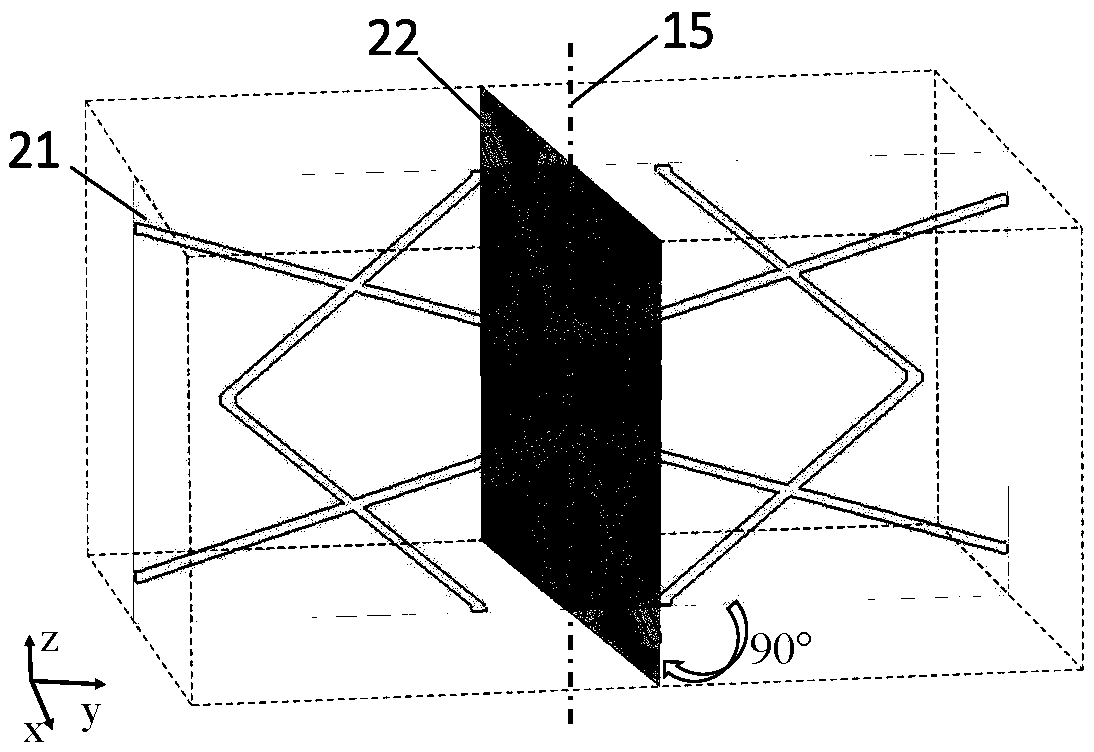A three-dimensional controllable auxetic cellular structure based on 3D printing
A 3D printing, three-dimensional technology, applied in the field of auxetic structures, can solve the problems of limited controllability and low stiffness of the model, and achieve the effect of various forms of spatial arrays, light weight, and resistance to compressive loads
- Summary
- Abstract
- Description
- Claims
- Application Information
AI Technical Summary
Problems solved by technology
Method used
Image
Examples
Embodiment Construction
[0032] The present invention will be described in further detail below in conjunction with specific embodiments.
[0033]The invention is a three-dimensional auxetic controllable multicellular structure based on 3D printing, and its basic constituent units are two three-dimensional unit cell structures. As shown in FIG. 1( a ), this structure is the first unit cell structure, and the unit cell includes two identical two-dimensional chiral honeycomb unit cells 21 and 22 . The two two-dimensional chiral honeycomb cells 21, 22 are first completely overlapped in space, and then the two-dimensional chiral honeycomb unit cells 22 rotate 90 degrees clockwise (or counterclockwise) with the axis 15 in the vertical direction as the center of rotation. degree (θ 3 =90°), that is, one two-dimensional chiral honeycomb unit cell 21 and another two-dimensional chiral honeycomb unit cell 22 bisect each other perpendicularly in space. Two two-dimensional chiral honeycomb unit cells 21, 22 ar...
PUM
| Property | Measurement | Unit |
|---|---|---|
| porosity | aaaaa | aaaaa |
Abstract
Description
Claims
Application Information
 Login to View More
Login to View More - R&D
- Intellectual Property
- Life Sciences
- Materials
- Tech Scout
- Unparalleled Data Quality
- Higher Quality Content
- 60% Fewer Hallucinations
Browse by: Latest US Patents, China's latest patents, Technical Efficacy Thesaurus, Application Domain, Technology Topic, Popular Technical Reports.
© 2025 PatSnap. All rights reserved.Legal|Privacy policy|Modern Slavery Act Transparency Statement|Sitemap|About US| Contact US: help@patsnap.com



